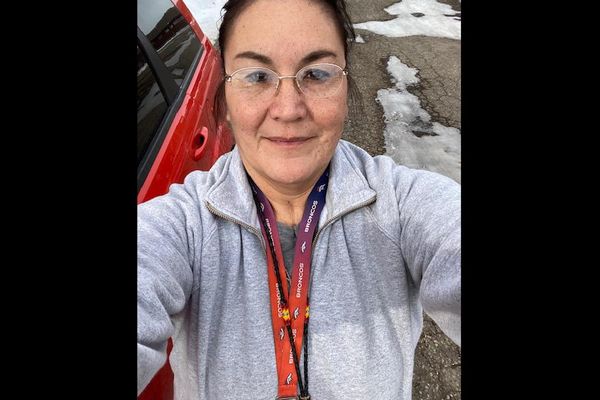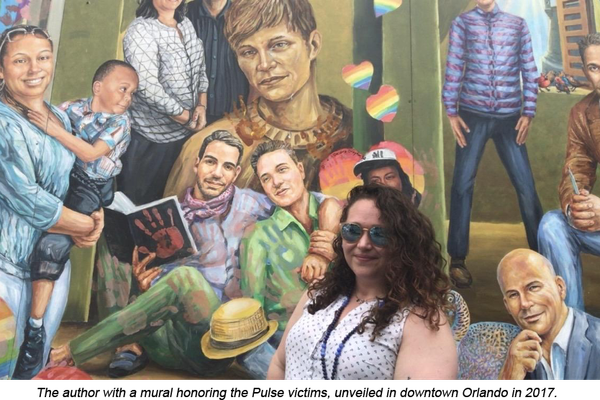As told to Jackie Froeber
September is Sepsis Awareness Month.
On the morning of my interview for this story, I was admitted to the ER with a 104.7 fever. I arrived at the hospital wrapped in blankets and shivering — I couldn't get warm — and I thought, Oh no, it's happening again.
I'm going into septic shock.
In my feverish state, I began having flashbacks of five years earlier when my life changed forever.
In 2016, I went to the doctor to manage my Crohn's disease when he said he saw spots on my colon. He thought it was cancer and prescribed me a chemotherapy pill. Right away, I had a reaction: My tongue was swollen and I was having trouble breathing. My mouth was bone dry and I had a fever. When I called my doctor, he said this was a normal reaction to the medication. I suffered for three days before slurring my words and descending into full-blown anaphylactic shock. My husband (now ex-husband) found me with glazed eyes slumped over in a chair and drove me to the ER.
My family would later tell me that my heart stopped three times within 30 minutes. I was intubated and put in a medically induced coma.
By nightfall, my liver and kidneys were shutting down, and I went into severe septic shock, which is when sepsis, your body's reaction to severe infection, progresses and causes a significant drop in blood pressure and organ failure. I was losing blood flow to my limbs, and the medical team administered vasopressor medication to help increase my blood pressure and keep my heart pumping. Doctors told my family I had a 9% percent chance of survival.
They should say goodbye.
The next couple of days were touch and go, but the nurse on duty said I began listening to commands, and I was taken off the ventilator because I began breathing on my own. I made it.
When I opened my eyes, I was still out of it, but when I looked down, I saw that my hands were black and shriveled. Like burnt hot dogs. "Why are my hands black?" I kept asking. I knew these were my hands because of my pink manicured nails, but I wasn't grasping the severity of the situation. I also wasn't coherent enough to understand what the doctor was saying: He wanted to amputate immediately above the elbows and above my knees (I couldn't see my legs at this time, but they had suffered the same fate) because he said gangrene (dead tissue from the lack of blood) that had been brought on by septic shock was spreading.
My family fought for a second opinion because tests proved that the gangrene wasn't actually spreading. I didn't know it then, but this was a huge deal for my quality of life: If the doctor amputated above the elbow and above the knee, I would need a caretaker.
The second doctor was open to waiting and saving as much of my limbs as possible. We agreed to amputate my hands from the wrist first, which meant that with therapy I could still do things like drive and shower. For my legs, we coated them in sulfadiazine — a powerful antibiotic cream — to help heal my skin and save as much of my legs as possible. It wasn't long before I felt a thrill of hope seeing a new patch of pink skin.
I was beyond thankful for the second opinion, but I was devastated that I was going to lose my hands and legs. Equally devastating: My husband decided to divorce me. I felt abandoned. I was crushed. But in retrospect, that dark place strengthened my determination to live an independent life.
My hand surgery was in June of 2016, and in July, I went to rehab where I was fitted for prosthetics and learned to brush my hair and do other everyday tasks.
After rehab, I stayed with my sister for three months. Every day, we did the same routine: drove to the doctor's office to remove the dead skin from my legs and reveal the progress. The monotony was enough to drive anyone mad, but the process worked: We saved more tissue than originally thought possible. The doctor was able to amputate below the knees in the same spot on both legs, and in November, I became a quad amputee.
After the surgery, I was taken to a rehab facility. When the elevator opened, so many nurses and patients were there to greet me. I had this overwhelming feeling of calm — the weirdest feeling — and I slept through the night for the first time in a long time.
The next morning, I went to therapy early. I thought of everything I had been through — without my husband — and it made me fight hard. I saw a counselor twice a week, and before I knew it, I was in a motorized wheelchair zipping around the facility.
I began forming relationships with the stroke victims on my floor. Some of them were depressed and didn't want to go to therapy. I was the only amputee at the facility, and I realized that we were all connected through a traumatic experience, but they felt like they couldn't live their lives. I wanted to show them that they could.
In turn, these relationships healed my heart. In December, we all cheered as I took my first steps in my prosthetics. And in February, I left rehab and went home to my own house. I relearned how to drive and cook my famous lasagna. I wrote a memoir, and I mentor other amputees.
So when I ended up in the hospital earlier this year, I was terrified that all my progress was going to be derailed by sepsis again. However, thankfully, I wasn't septic. I had a UTI (without the typical symptoms), and I was treated and sent home.
I want people to know that sepsis is about T-I-M-E:
Temperature
Infection
Mental decline
Extreme illness/pain
Recently, I had a follow-up for that colon cancer diagnosis that led to sepsis, and there was no sign of cancer. It turns out I was misdiagnosed by one doctor and, as a result, I lost all my limbs. I want other women to know that, even if you trust your doctor, there's nothing wrong with getting a second opinion when it comes to standing up for your health.







